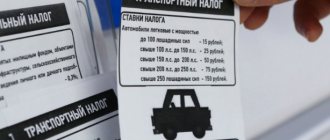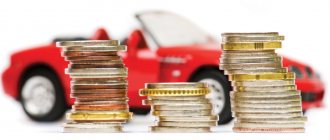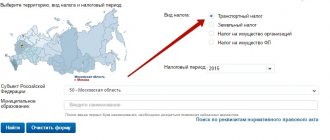What is Unified Agricultural Tax
The unified agricultural tax was introduced in Russia in 2004.
Legislators believed that using a simple and understandable scheme would reduce the burden on agribusiness. The object of taxation of the Unified Agricultural Tax is the difference between income and expenses. The interest rate is 6%. The calculation formula is as follows: tax amount = (revenue – expenses) × tax rate.
Only those entrepreneurs who received 70% of their revenue from agricultural production can take advantage of the right to switch to the unified agricultural tax (Article 26.1 of the Tax Code of the Russian Federation).
Types of activities for which unified agricultural tax can be applied:
- Crop production as a branch of agriculture (forestry).
- Livestock products.
- Growing and growing fish.
- Fishing.
- Primary and industrial processing of agricultural products following production.
What taxes does the LLC pay?
At the same time, income from the sale of own farm products must be more than 70% of the total.
- Agricultural consumer cooperatives, in which more than 70% of their income comes from the sale of products produced by members of the cooperative.
- Individual entrepreneurs and fishing enterprises with an average annual number of employees of less than 300, with income from the sale of catch in relation to total revenue of more than 70%.
- Organizations providing agricultural services.
To switch to the Unified Agricultural Tax, an enterprise must produce or sell agricultural products. For example, it is unacceptable to only process it.
All entrepreneurs who have chosen the Unified Agricultural Tax must maintain an accounting book (KUDiR). From 2021, it no longer needs to be certified by the Federal Tax Service, which also applies to peasant farms on the Unified Agricultural Tax. What is the Unified Agricultural Tax? The Unified Agricultural Tax is a tax regime created specifically for entrepreneurs and organizations engaged in the production of agricultural products. A feature of the Unified Agricultural Tax, like any other special regime, is the replacement of the main taxes of the general system with one - a single one. The following are not subject to payment on the Unified Agricultural Tax:
- Personal income tax (for individual entrepreneurs).
- Income tax (for organizations).
- VAT (except for export).
- Property tax (except for objects for which the tax base is determined as their cadastral value).
What products are considered agricultural? Agricultural products include products of crop production, agriculture, forestry, and livestock (including those obtained as a result of growing and rearing fish and other aquatic biological resources).
How to switch to Unified Agricultural Tax
The single agricultural tax can be applied immediately after registering an individual entrepreneur. You can also switch to it from another system.
If you register an individual entrepreneur, then within 30 days you must submit a tax notice (Article 346.3. Tax Code of the Russian Federation). If you are already operating and decide to change the tax system, then you can start using the Unified Agricultural Tax only from next year (Article 346.3 of the Tax Code of the Russian Federation), you must inform the tax office about this before December 31. This means that in order to switch to the Unified Agricultural Tax in 2021, you need to submit a document before the end of 2018.
The form for notifying the transition to the unified agricultural tax was approved by order of the Federal Tax Service of Russia dated January 28, 2013 MMV-7-3/41.
To switch to the unified agricultural tax in 2021, you need to send a notification to the tax office before the end of 2021.
What is the Unified Agricultural Tax (USAT)
Unified agricultural tax is a specialized method of calculating tax for persons whose activities are related to the production of agricultural products, available for transition provided they receive at least seventy percent of income from this activity.
Any agricultural producer whose main income is directly from the sale of relevant products can claim the right to pay taxes in accordance with the special Unified Agricultural Tax regime. An agricultural producer is a company or individual entrepreneur that produces and processes agricultural products, receiving a profit for this of at least seventy percent of the total annual revenue.
In turn, the law recognizes agricultural products as:
- crop products;
- livestock products, including fish products.
An entity cannot be recognized as a manufacturer of agricultural products if it is a reseller of the product for the purpose of processing it. An important condition is the production of products, that is, their primary receipt.
It is more difficult for producers of fish products to switch to the Unified Agricultural Tax, since they have the right to use the Unified Agricultural Tax provided:
- compliance with the percentage of income (70%);
- production of fishery products using owned vessels;
- the number of hired employees should not exceed 300 people.
It is not enough to be recognized as an agricultural producer once; that status must be maintained throughout the entire activity, otherwise consequences determined by law will occur.
In the prescribed cases, an organization may lose the right to use the Unified Agricultural Tax:
- An individual entrepreneur or legal entity no longer meets the criteria of an agricultural producer;
- The economic entity, in addition to its main activity, has become an organizer of gambling or a manufacturer of excisable goods.
If the right to use a special tax regime has been lost, you can return to its use only by skipping one tax period, that is, a calendar year.
How to report
The main reporting document for individual entrepreneurs on the Unified Agricultural Tax is the tax return. Order of the Federal Tax Service of Russia dated 02/01/2016 No. ММВ-7-3/51 “On amendments to the annexes to the order of the Federal Tax Service of Russia dated 07/28/2014 No. ММВ-7-3/384” regulates the latest edition of the form and procedure for filling it out.
The declaration must be submitted no later than March 31 of the year following the reporting year. For entrepreneurs without employees, it is necessary to keep a book of income and expenses (KUDiR). The fact is that the tax period of the Unified Agricultural Tax is a year, and the reporting period is a half-year. Therefore, just like with the simplified tax system, you need to make an advance payment. But unlike the “simplified” payment, the advance must be made once. And you will take the data for calculation in KUDiR.
An entrepreneur with a staff will have to submit more documents.
To the Federal Tax Service (tax office):
- Information on the average number of employees.
- Declarations in form 2-NDFL and 6-NDFL.
In the FSS (Social Insurance Fund) and the Pension Fund (PFR):
- RSV-1 – quarterly.
- ADV-6-5, SZV-6-4, ADV-6-2 (personalized accounting) - quarterly.
- 4-FSS – quarterly.
- At the end of the year, confirm the main type of activity with the Social Insurance Fund - until April 15 of the year following the reporting one.
How to pay
The advance payment for entrepreneurs applying the single agricultural tax system is calculated as follows:
- We determine the tax base from the beginning of the year to the end of the six months.
- The final tax is determined in the same way, but we take into account income and expenses from the beginning to the end of the year. We take into account the advance payment.
- We pay no later than 25 days after the end of the semester. Annual tax – until March 31. This can be done on the Federal Tax Service online service.
Advance payment = (income - expenses) × tax rate. Final tax = (income – expenses – advance payment) × tax rate.
Features of the calculation of Unified Agricultural Tax
The simplified ones differ from the general system in the rate, calculation procedure, confirmation procedure and, in some cases, features of payment terms. The rate for calculating tax under the Unified Agricultural Tax system is 6%.
Tax calculation under the Unified Agricultural Tax has the following features:
- to calculate the tax base, it is necessary to reduce income by the amount of expenses;
- if there were losses in previous years, the tax base can be reduced by the appropriate amount;
- the main thing is that income and expenses are calculated on an accrual basis from the beginning of the tax period.
Thus, a business entity pays tax only on amounts actually earned. This allows the agricultural producer not to go into the red when paying taxes. The main thing is not to forget that everything must be documented. All financial transactions must be completed in accordance with the requirements of the law, otherwise there is a chance of encountering problems.
Changes in 2021
Until 2021, companies that pay the Unified Agricultural Tax were completely exempt from corporate property tax. Individual entrepreneurs on the Unified Agricultural Tax were exempt from property tax for individuals in relation to objects used in business activities. All this is regulated by clause 3 of Article 346.1 of the Tax Code of the Russian Federation.
In January 2021, the situation changed. Organizations and individual entrepreneurs will not pay property tax only on objects used in the production of agricultural products, primary and subsequent industrial processing and sale of these products, as well as in the provision of services by agricultural producers. All other property of Unified Agricultural Tax payers will be taxed.
Changes in 2021
Organizations and individual entrepreneurs who pay the Unified Agricultural Tax will be recognized as VAT payers from January 2021. Clause 8 of Article 346.1 of the Tax Code of the Russian Federation will cease to apply. Unified agricultural tax payers will make deductions and restore value added tax like everyone else. From the same time, subclause 8 of clause 2 of Article 346.5 of the Tax Code of the Russian Federation, which states that “input” VAT applies to expenses, will cease to apply.
Organizations and individual entrepreneurs who pay the Unified Agricultural Tax will be recognized as VAT payers from January 2021.
But in 2021, those who pay the Unified Agricultural Tax will receive the right to be exempt from VAT under Article 145 of the Tax Code of the Russian Federation. True, there are some caveats here. An individual entrepreneur or organization must declare its right to work without VAT in the same year in which it submitted an application for the desire to pay the Unified Agricultural Tax. There is an alternative condition: in the previous tax period, income from activities related to agriculture (excluding the single tax) should not exceed the established limit: 100 million rubles for 2021, 90 million rubles for 2019, 80 million rubles for 2021 year, etc.
Transport tax will reduce the Unified Agricultural Tax
As an individual entrepreneur, in September 2005 I purchased a KamAZ car with a trailer. In the purchase and sale agreement, payment documents, and vehicle passport, the owner indicates “IP Nekrut V.P.”, and not just an individual. In July 2007, I received a tax request to pay transport tax in the amount of 20,474 rubles. I paid the tax. Can I, in accordance with sub. 23 clause 2 art. 346.5 of the Tax Code of the Russian Federation to include the amount of transport tax as an expense? Do I have to submit transport tax returns?
V.P. Nekrut, individual entrepreneur, Krasnodar region
From the question it can be understood that an individual entrepreneur applies a taxation system for agricultural producers, that is, he is a payer of the unified agricultural tax (USAT). At the same time, by virtue of clause 3 of Art. 346.1 of the Tax Code of the Russian Federation, he is not exempt from paying transport tax.
When determining the object of taxation, payers of the Unified Agricultural Tax have the right to reduce the income they receive not by all expenses incurred, but only by those specifically indicated in Chapter. 26.1 Tax Code of the Russian Federation. In particular, the closed list of such expenses mentions the amounts of taxes and fees paid in accordance with the legislation of the Russian Federation on taxes and fees (subclause 23, paragraph 2, article 346.5 of the Tax Code of the Russian Federation).
Payers of transport tax are organizations and individuals on which vehicles are registered that are recognized as subject to this tax (Article 357 of the Tax Code of the Russian Federation). Moreover, nowhere in the text of Ch. 28 “Transport Tax” of the Tax Code of the Russian Federation does not mention individual entrepreneurs.
According to paragraph 2 of Art. 11 of the Tax Code of the Russian Federation in the legislation on taxes and fees, individual entrepreneurs are understood as individuals registered in the prescribed manner and carrying out entrepreneurial activities without forming a legal entity, as well as heads of peasant (farm) farms.
Registration with the State Traffic Safety Inspectorate of the Ministry of Internal Affairs of Russia of vehicles belonging to individuals registered as individual entrepreneurs is carried out in the manner prescribed for the registration of vehicles for individuals (clause 5.4 of the Rules for the registration of motor vehicles and trailers for them, approved by the Order of the Ministry of Internal Affairs of Russia dated 27.01. 2003 No. 59).
Thus, based on the above, for the purposes of paying transport tax, it does not matter whether an individual has the status of an entrepreneur or not. In other words, since “IP Nekrut V.P.” is not an organization, he must pay transport tax as an individual.
Only for organizations are provided: reporting period (clause 2 of article 360 of the Tax Code of the Russian Federation); independent calculation of the amount of tax and the amount of advance payments, payment of advance payments (clause 1 of Article 362, Article 363 of the Tax Code of the Russian Federation); submission to the tax authority of a declaration and calculations for advance payments for transport tax (Article 363.1 of the Tax Code of the Russian Federation).
The amount of tax payable by individual taxpayers is calculated by the tax authorities (Clause 1, Article 362 of the Tax Code of the Russian Federation). This is done on the basis of information submitted to the tax authorities by the traffic police.
Having calculated the tax, the tax authority sends a corresponding tax notice to the taxpayer - an individual. The latter pays transport tax on the basis of this notification (clause 3 of Article 363 of the Tax Code of the Russian Federation).
Thus, an individual entrepreneur is not required to submit a transport tax return.
In our opinion, you can take into account the amount of transport tax paid in expenses when calculating the Unified Agricultural Tax.
This opinion is shared by the Russian Ministry of Finance (see Letter dated 02.02.2005 No. 03-03-02-05/7). The explanations given in this Letter were addressed to the entrepreneur applying the simplified tax system. But, given the similarity of the two special tax regimes (STS and Unified Agricultural Tax), we believe that these clarifications can also guide an entrepreneur who pays the Unified Agricultural Tax.
Expenses taken into account for the purpose of calculating the Unified Agricultural Tax are accepted subject to their compliance with the criteria specified in paragraph 1 of Art. 252 of the Tax Code of the Russian Federation: expenses must be justified, documented and incurred to carry out activities aimed at generating income (clause 3 of Article 346.5 of the Tax Code of the Russian Federation).
You will confirm the fact of accrual and payment of tax with a notice of payment of this tax and a receipt paid at the bank.
Since the truck was purchased by you as an individual entrepreneur, and not as an individual (and this is confirmed by documents on its purchase), in our opinion, there is no need to specifically prove that you actually used the truck in activities subject to the Unified Agricultural Tax. It is difficult to imagine that a heavy truck - a KamAZ with a trailer - was purchased for use in personal farming, and not in business activities. If the tax authorities do not agree with this, then, based on the presumption of innocence of the taxpayer, they will have to provide evidence of the non-use of the truck in this activity (clause 6 of Article 108 of the Tax Code of the Russian Federation).
Who benefits from it?
Agricultural producers (individual entrepreneurs and LLCs) have been reluctant to use unified agricultural tax in the last few years. Let's figure out why this happens.
Firstly, the Unified Agricultural Tax exempts people from paying value added tax. But, according to statistics, most of the contractors of farms are large companies that use OSNO. Transactions between VAT payers and non-payers become inconvenient due to complex reporting and the inability to make a VAT refund.
Secondly, the VAT rate on agricultural products is now only 10%. And this tax can be reimbursed at a general rate of 18%. For example, a farmer sells wheat with VAT of 10% and buys a tractor with VAT of 18%. The benefits of using OSNO in this case are obvious.
Thirdly, the property tax is very low, and since 2013 another benefit has been in effect - a zero rate on movable property. Therefore, the benefits of using OSNO in some cases outweigh its disadvantages.
Of course, it’s up to you to decide whether to use the Unified Agricultural Tax or stay on OSNO, but don’t forget to take into account the specifics of your business. The simplicity of the Unified Agricultural Tax may seem like a great bonus to you, but you should take into account the taxation system of your partners. Take a responsible approach to your business, and your business will go uphill.









